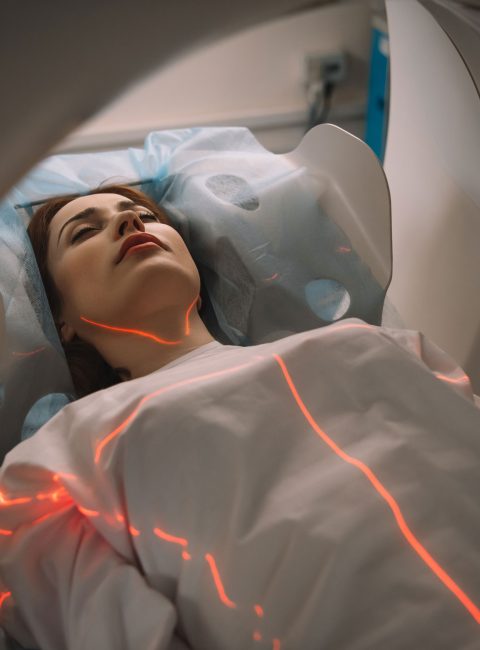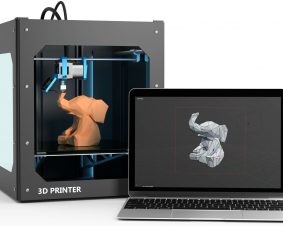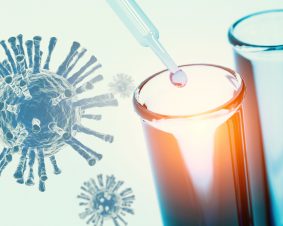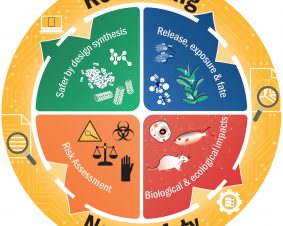 >
Spotlight December 2022: Fighting tumors with micro robots
>
Spotlight December 2022: Fighting tumors with micro robots
When we, the DaNa team as operators of the website nanopartikel.info, write about nanobots, i.e. nanometre-sized machines, we point out that these machines belong to science fiction, may even remain a utopia – i.e. never realisable. On the significantly larger micro-scale, however, small machines are conceivable that could help in the therapy of diseases, e.g. cancer. Such an approach is now presented by S. Schürle from ETH Zurich, who is developing magnetically controllable microrobots. She is using naturally occurring bacteria that have a magnetic “core” and with the help of which they can be steered to the target as microrobots.
This approach is not entirely new in terms of the basic idea, but it is significantly improved by the Zurich working group because rotating magnetic fields are used to make the bacteria rotate. The impression is that the microrobots now work like micro-drilling machines and drill their way non-destructively between cells to get from blood vessels through the blood vessel wall to tumour cells. You can read about the results she has achieved and the new approaches S. Schürle is exploring on the ETH Zurich website and in the original publication cited there (Gwisai T, Mirkhani N, Christiansen MG, Nguyen TT, Ling V, Schuerle S: Magnetic torque-driven living microrobots for increased tumour infiltration, Science Robotics 26 October 2022, doi: https://doi.org/10.1126/scirobotics.abo0665)

Weitere Spotlights
Spotlight November 2023: Early Awareness and Action System for Advanced Materials (Early4AdMa)
Advanced materials hold immense potential to address global challenges such as environmental degradation, transformation of the energy sector, and development towards circularity. To harness their benefits while ensuring safety and sustainability, regulatory bodies, scientific communities, and industries have recognized the need for proactive approaches. The “Early4AdMa” system is a pre-regulatory risk governance tool for advanced […]
Read moreSpotlight March 2022: Safe Materials from Scratch – Safe-by-Design-Concept in action
In recent decades, German research on nanomaterials and new, innovative materials has been widely expanded by material safety aspects. European initiatives also pay significant attention to this: both the European Union (EU) Green Deal, and the Chemicals Strategy for Sustainability (CSS) aim to create a sustainable, climate-neutral economy with sustainable and safe chemicals and products, […]
Read moreSpotlight March 2021: Is Nanotechnology the Swiss Army Knife against Future Pandemics?
The COVID 19 outbreak has led to a fundamental rethinking of existing approaches to diagnosis, treatment, and prevention methods. The need for better and more efficient concepts is global and urgent. Nanotechnology has long been at the forefront of innovation and has led to advances in many different disciplines. Could this interdisciplinary field help develop […]
Read moreSpotlight Juli 2020: “Nanosafety – More than just regulatory processes”
Nanosafety is more than just a compulsory aspect of nanomaterials research and regulation. This research area also has great potential to drive new innovations. It is exactly this perspective that is addressed in the special issue “Rethinking Nanosafety: Harnessing Progress and Driving Innovation” by Chen et al. 2020. The article illustrates that especially in the field of […]
Read more


